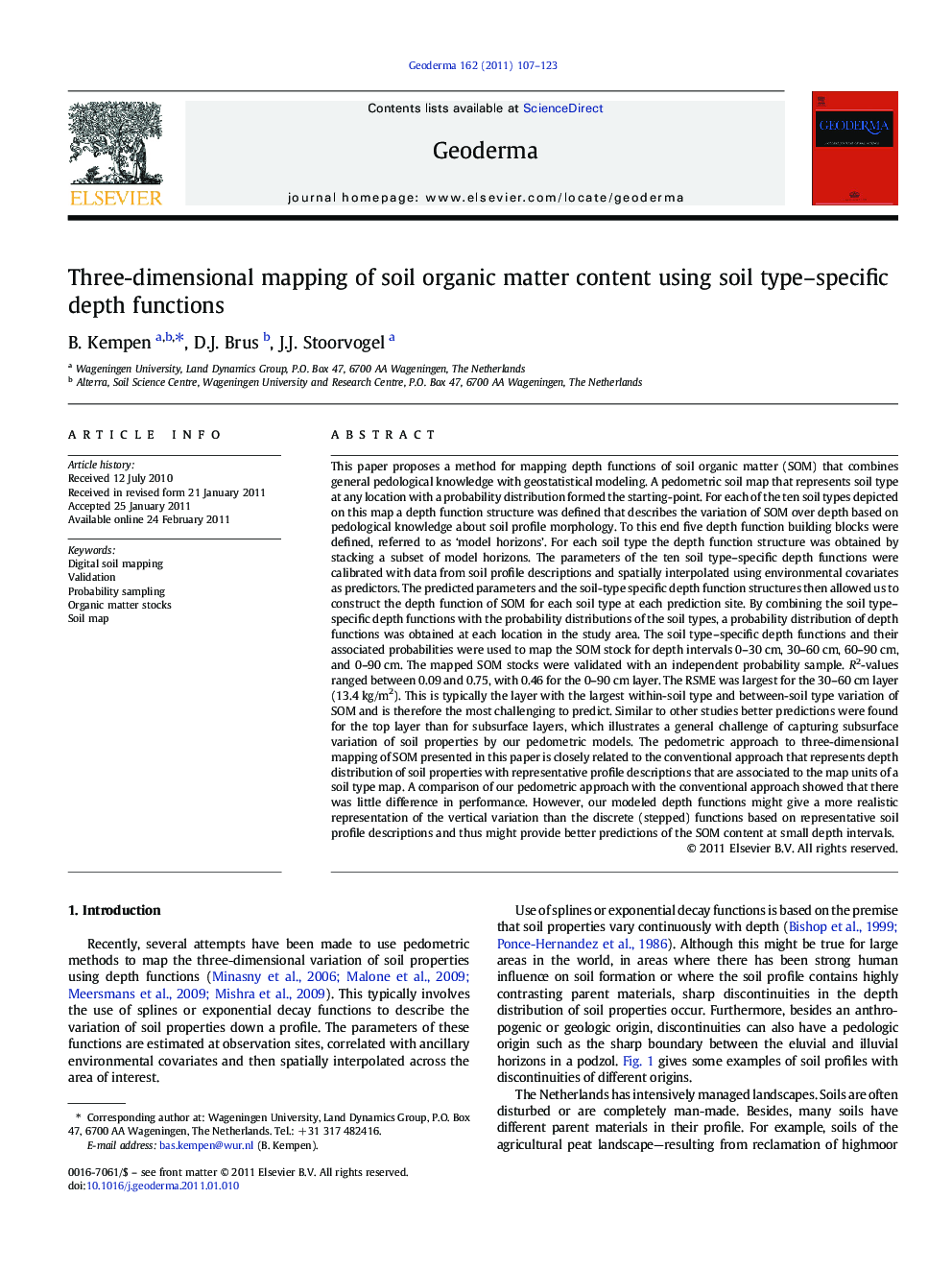| Article ID | Journal | Published Year | Pages | File Type |
|---|---|---|---|---|
| 4574116 | Geoderma | 2011 | 17 Pages |
This paper proposes a method for mapping depth functions of soil organic matter (SOM) that combines general pedological knowledge with geostatistical modeling. A pedometric soil map that represents soil type at any location with a probability distribution formed the starting-point. For each of the ten soil types depicted on this map a depth function structure was defined that describes the variation of SOM over depth based on pedological knowledge about soil profile morphology. To this end five depth function building blocks were defined, referred to as ‘model horizons’. For each soil type the depth function structure was obtained by stacking a subset of model horizons. The parameters of the ten soil type–specific depth functions were calibrated with data from soil profile descriptions and spatially interpolated using environmental covariates as predictors. The predicted parameters and the soil-type specific depth function structures then allowed us to construct the depth function of SOM for each soil type at each prediction site. By combining the soil type–specific depth functions with the probability distributions of the soil types, a probability distribution of depth functions was obtained at each location in the study area. The soil type–specific depth functions and their associated probabilities were used to map the SOM stock for depth intervals 0–30 cm, 30–60 cm, 60–90 cm, and 0–90 cm. The mapped SOM stocks were validated with an independent probability sample. R2-values ranged between 0.09 and 0.75, with 0.46 for the 0–90 cm layer. The RSME was largest for the 30–60 cm layer (13.4 kg/m2). This is typically the layer with the largest within-soil type and between-soil type variation of SOM and is therefore the most challenging to predict. Similar to other studies better predictions were found for the top layer than for subsurface layers, which illustrates a general challenge of capturing subsurface variation of soil properties by our pedometric models. The pedometric approach to three-dimensional mapping of SOM presented in this paper is closely related to the conventional approach that represents depth distribution of soil properties with representative profile descriptions that are associated to the map units of a soil type map. A comparison of our pedometric approach with the conventional approach showed that there was little difference in performance. However, our modeled depth functions might give a more realistic representation of the vertical variation than the discrete (stepped) functions based on representative soil profile descriptions and thus might provide better predictions of the SOM content at small depth intervals.
Research Highlights► Combines pedological knowledge and geostatistics for mapping SOM depth functions. ► Soil type map is valuable information for 3D mapping of soil properties. ► Depth functions give better predictions for topsoil layer than subsurface layers. ► Comparison with conventional approach shows little difference in performance.
